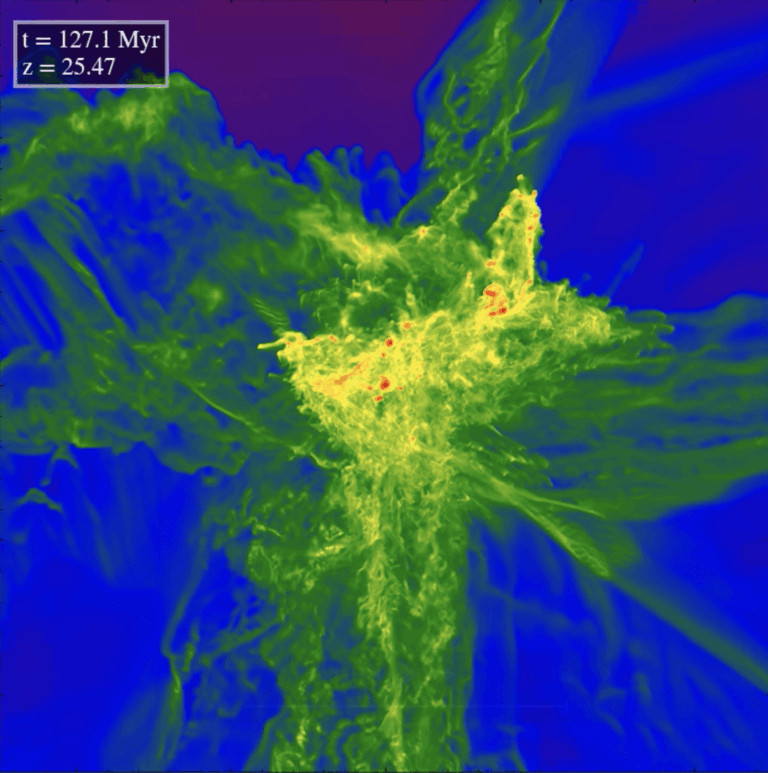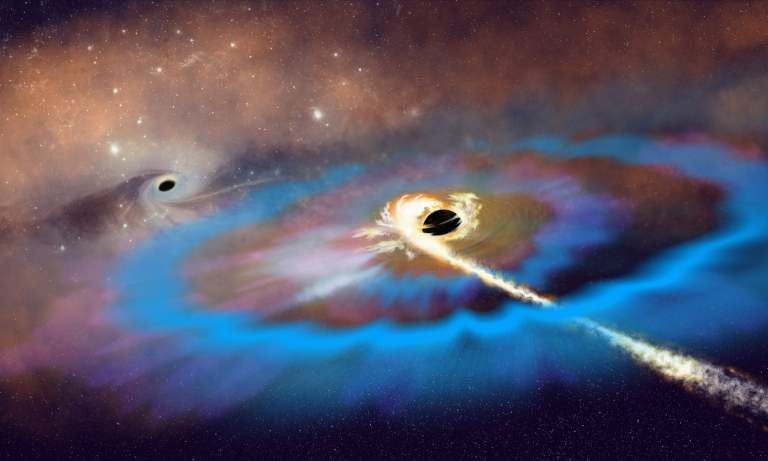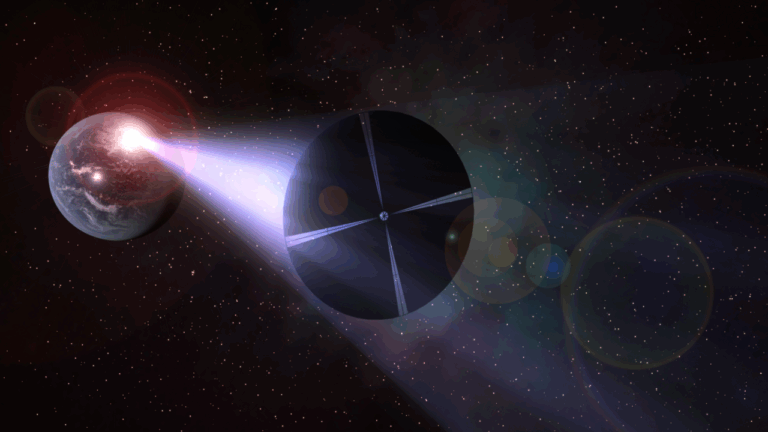Key Takeaways:
- On April 11, 2017, Sagittarius A* (Sgr A*) exhibited a powerful X-ray flare, simultaneously observed by NASA’s Chandra X-ray Observatory and the Atacama Large Millimeter/submillimeter Array (ALMA).
- This observation marked the first strong indication of orbiting hot spots around Sgr A* being detectable in radio wavelengths, a phenomenon previously clear only in X-ray and infrared.
- The research supports a theory that these energetic flares result from interactions between Sgr A*'s accretion disk material and its magnetic field, where temporary breaks in magnetic field lines release energy and create transient hot plasma bubbles.
- The detected hot spot orbited Sgr A* at approximately 30% the speed of light, completing one revolution in about 70 minutes before dissipating approximately 35 minutes later.
Tucked away in the heart of the Milky Way galaxy is a slumbering giant known as Sagittarius A* (pronounced “A-star”). While some supermassive black holes can be extremely active — devouring large quantities of gas and dust that glow brilliantly in X-rays — Sagittarius A*, or Sgr A* for short, is rather lethargic in comparison.
But occasionally, Sgr A* will put on a fleeting show.
While the Event Horizon Telescope (EHT) had its eyes trained on Sgr A* in April 2017, collecting data for the first image of our galaxy’s supermassive black hole, an armada of other telescopes also targeted the giant black hole. And on April 11, NASA’s Chandra X-ray Observatory spotted a powerful burst of X-rays.
By coincidence, the Atacama Large Millimeter/submillimeter Array (ALMA) was taking observations of Sgr A* for EHT when that X-ray flare occurred — filling an important data gap. The research was published today (Sept. 22) in Astronomy & Astrophysics.
“What is really new and interesting is that such flares were so far only clearly present in X-ray and infrared observations of Sagittarius A*,” said lead author Maciek Wielgus of the Max Planck Institute for Radio Astronomy in Bonn, Germany, in a press release. “Here, we see for the first time a very strong indication that orbiting hot spots are also present in radio observations.”
Mysteries abound
Black holes are objects where gravity is so strong that nothing, not even light, can escape. The event horizon, or “surface” of the black hole, marks this boundary of no return. Astronomers can only theorize as to what goes on beyond this point.
But the region outside the event horizon isn’t free of mysteries either.
Scientists don’t fully grasp what causes flares such as the one Chandra detected. One theory points to interactions between material in the black hole’s accretion disk and the magnetic field surrounding the black hole. In the case of Sgr A*, the researchers think the magnetic field acts as a barrier, preventing the black hole from devouring as much material as it otherwise would. This magnetic blockage causes gas and dust to clump up in certain areas around the black hole.
Eventually, this built-up tension causes one of the magnetic field lines to temporarily break, allowing the black hole to gorge itself. The breakage also releases energy into the surrounding material, forming a hot bubble of plasma.
Initially, these hot spots might primarily emit X-rays, Wielgus told Astronomy. “Maybe it needs a bit of time to cool down to show up at low frequencies corresponding to millimeter [radio] wavelengths.” It was these latter wavelengths that ALMA was able to detect.
On average, a hot spot typically lasts for a single orbit before being sheared apart by the black hole. In this case, the clump of gas was zipping around the Milky Way’s black hole at some 30 percent the speed of light. At those mind-bending speeds, it was able to complete a lap in about 70 minutes, and it was torn apart some 35 minutes later.
While the new observations support a magnetic origin for these energetic flares, they also offer a glimpse at the true shape of Sgr A*’s magnetic field. Like with M87*, more data from EHT telescopes may provide a more complete view of our galaxy’s central black hole.
“Hopefully, one day,” Wielgus said in the ESO press release, “we will be comfortable saying that we ‘know’ what is going on in Sgr A*.”











